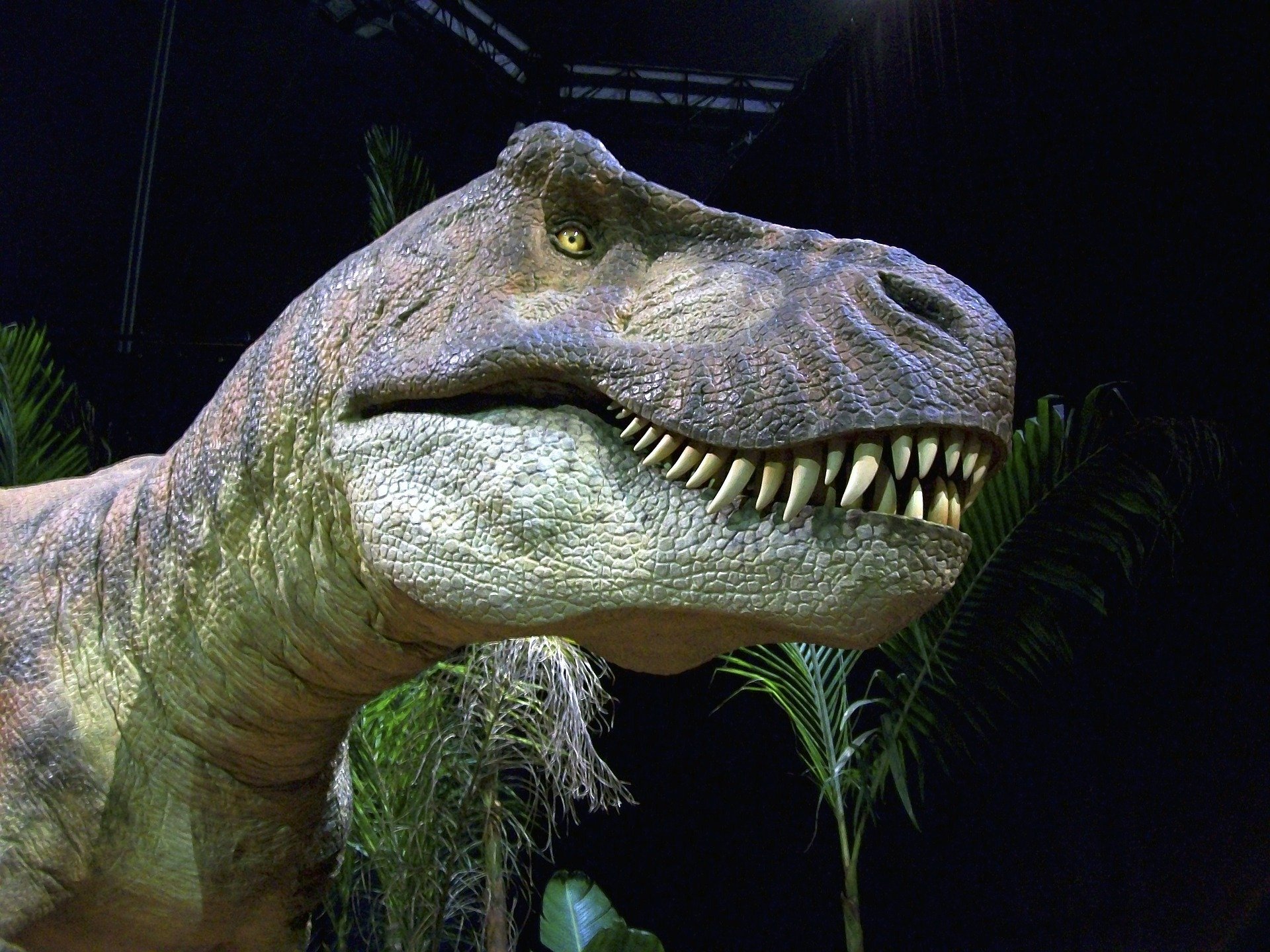
Tyrannosaurus rex was one of the largest carnivorous dinosaurs ever known.
The first T. rex skeleton was discovered in 1902 by Barnum Brown, a paleontologist at the American Museum of Natural History.
Tyrannosaurus rex - from the Greek words for "tyrant" and "lizard" and the Latin word for "king" - lived 68 million to 66 million years ago, during the Late Cretaceous period (just before the asteroid impact that ended the era of dinosaurs).
| Profile | Tyrannosaurus |
|---|---|
| Prehistoric Era | Upper Cretaceous (Maastrichtian 68 - 66 million years) |
| Order | Saurischia |
| Suborder | Theropoda |
| Family | Coelurosauria |
| Tribe | Tyrannosauroidea |
| Genus | Tyrannosaurus |
| Species | Tyrannosaurus rex |
| Height | 4 meters |
| Length | 12.8 meters |
| Weight | 7.2 tons |
| Territory | USA, Canada |
Feathers are not preserved in Tyrannosaurus fossils, so they have not been found in a T. rex specimen. But other dinosaur fossils, including other species of Tyrannosaurs and their relatives, have preserved feathers.
Paleontologists now "safely assume" , that T. rex also had feathers.
Although adult T. rexes were mostly covered with scales, scientists believe they had areas of feathers in conspicuous places such as the head and tail.
The T. rex hatchlings looked more like fluffy turkeys than fearsome predators.
The T. rex hatchlings were covered in peach fuzz, much like a duckling. As they aged, they lost most of their feathers and retained only the feathers on their head, neck, and tail.
Most hatchlings did not survive infancy. A baby T. rex had more than a 60 percent chance of succumbing to predators, disease, accidents, or starvation during its first year of life.
The T-Rex may have been large and intimidating, but its arms were actually rather small.
It had forearms with two fingers that would have been able to capture prey, but they were not long enough to reach the Tyrannosaurus' mouth.
It is believed that their teeth served to grasp the flesh of the prey, and then by means of the strong neck muscles, by violently waving the head, tear it from the bone.
Bones were found in the dung of T-Rex, which suggests that the predator crushed and broke bones while eating.
Paleontologists can estimate the age at which a dinosaur died by analyzing its fossilized bones. Much like trees have growth rings, the fossilized bones of dinosaurs also have rings.
Experts can count the number of rings, and compare the spacing between rings to infer its age. They also try to find out how fast the dinosaur grew at different ages.
Image Source: KoprX, CC BY-SA 4.0 https://creativecommons.org/licenses/by-sa/4.0, via Wikimedia Commons